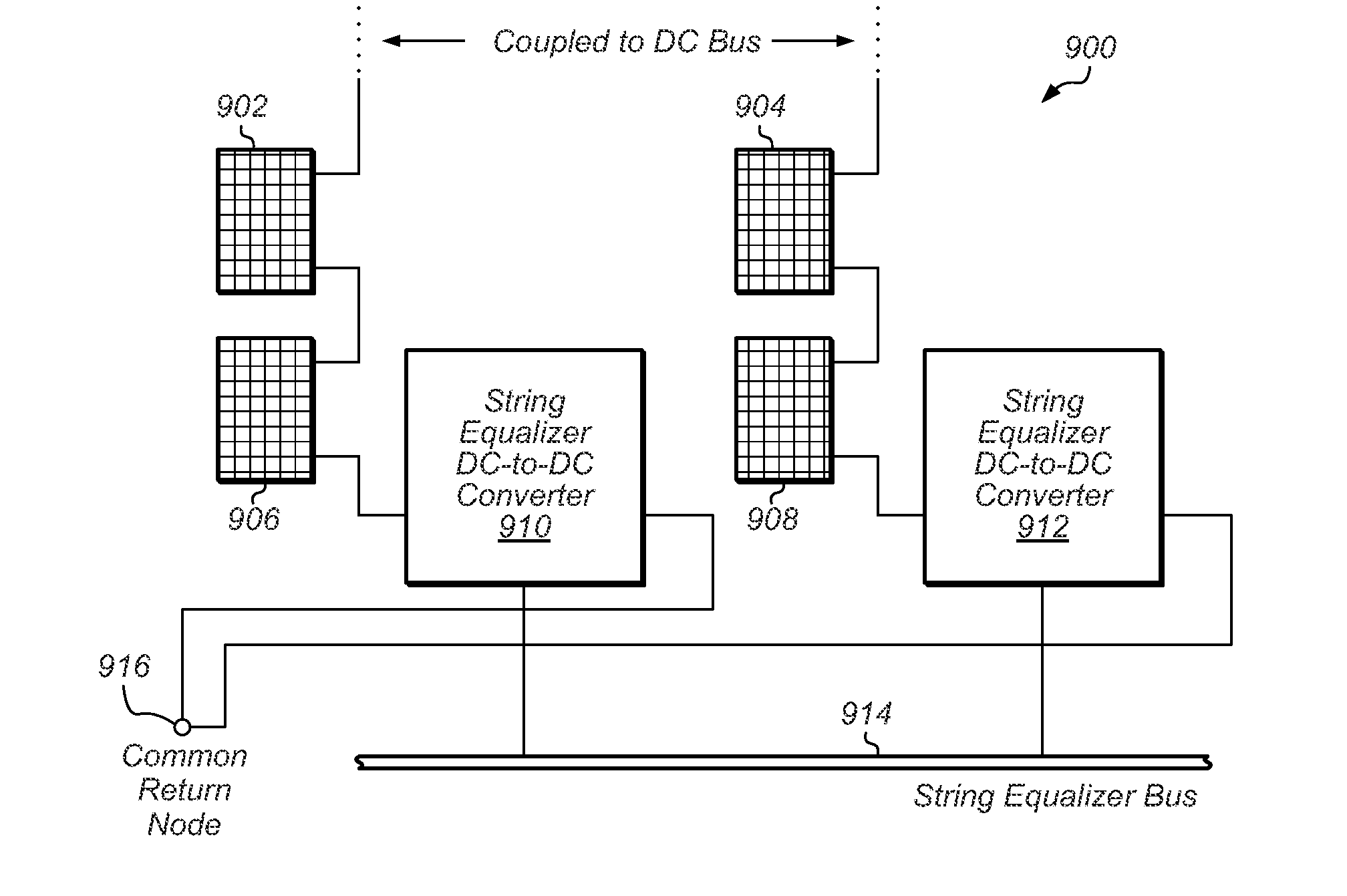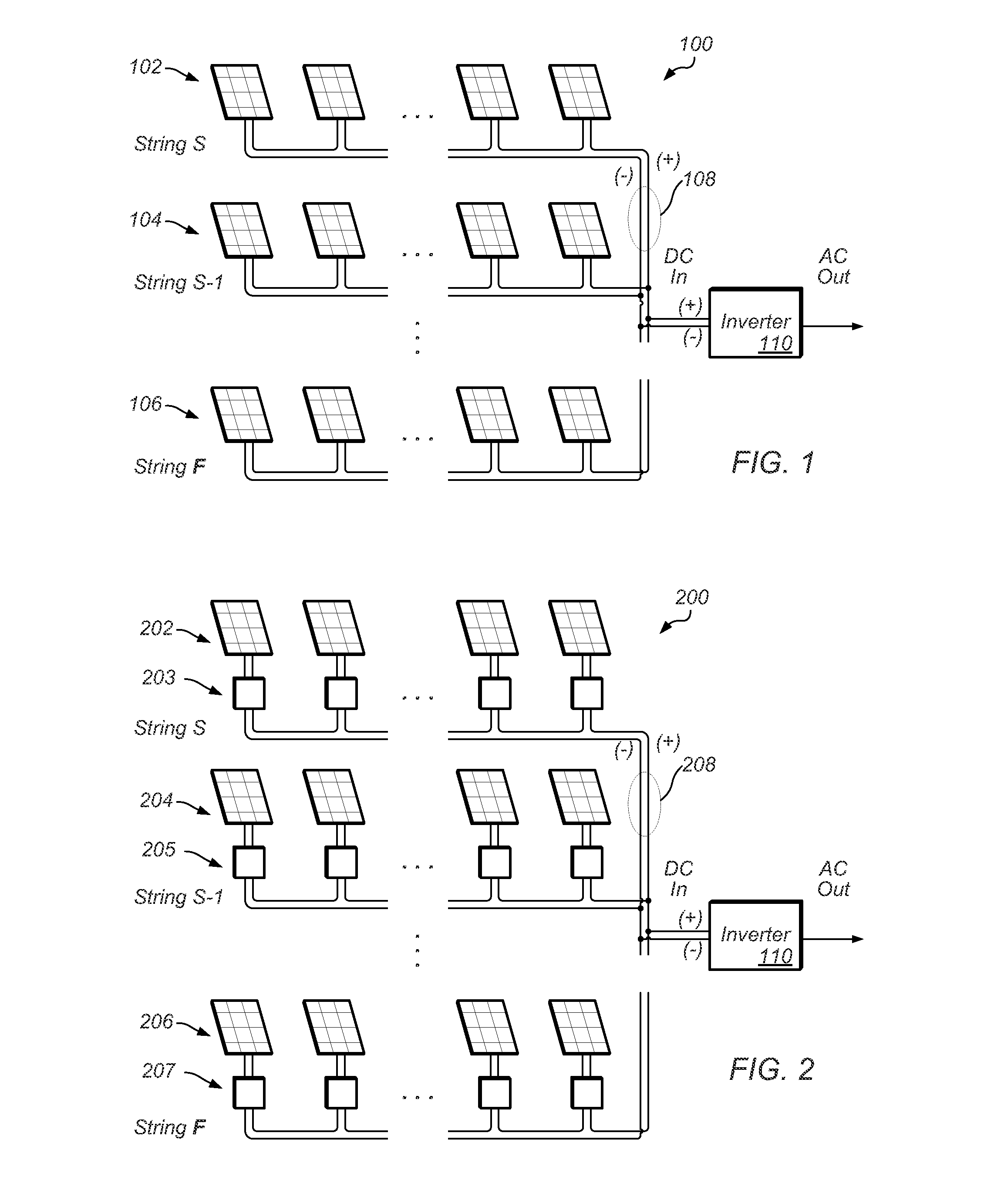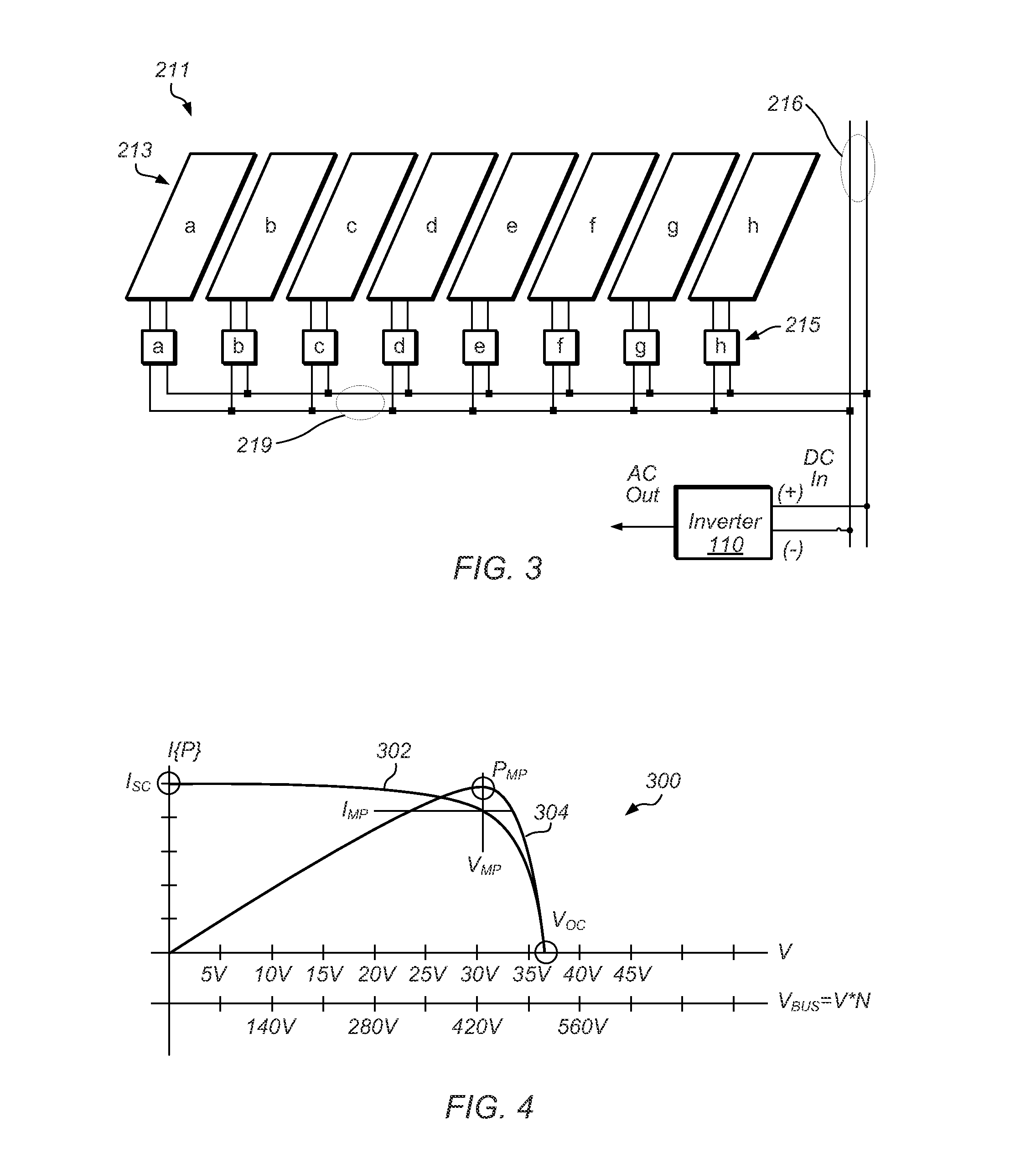Power Shuffling Solar String Equalization System
a solar array and equalization system technology, applied in the field of photovoltaic arrays, can solve the problems of increasing the loss of panel mismatch, increasing the voltage between the two electrodes, and the power produced by a single solar panel is rarely sufficient to meet the most common power requirements
- Summary
- Abstract
- Description
- Claims
- Application Information
AI Technical Summary
Benefits of technology
Problems solved by technology
Method used
Image
Examples
Embodiment Construction
[0035]A typical solar array 100 is shown in FIG. 1. Solar panel series-strings 102 (String S), 104 (String S-1), and 106 (String F) are coupled in parallel to bus 108, which may be a DC / DC bus. Each solar panel series-string includes solar panels coupled in series to a respective bus, each of those respective buses coupling to bus 108 as shown to obtain parallel-coupled solar panel series-strings. An inverter 110 is coupled to bus 108 to ultimately drive a connected load, which may be coupled to the output of inverter 110.
[0036]An example of the V / I (voltage / current) characteristic for each solar panel is shown in FIG. 4. As seen in FIG. 4, the V / I characteristic may be modeled as a current source in parallel with a multiplied shunt diode, where the current is proportional to the solar insolation levels, and the shunt diode is the result of the solar cell diode in each cell multiplied by the number of cells in series which make up that solar panel. Curve 302 represents the V / I curve...
PUM
 Login to View More
Login to View More Abstract
Description
Claims
Application Information
 Login to View More
Login to View More - R&D
- Intellectual Property
- Life Sciences
- Materials
- Tech Scout
- Unparalleled Data Quality
- Higher Quality Content
- 60% Fewer Hallucinations
Browse by: Latest US Patents, China's latest patents, Technical Efficacy Thesaurus, Application Domain, Technology Topic, Popular Technical Reports.
© 2025 PatSnap. All rights reserved.Legal|Privacy policy|Modern Slavery Act Transparency Statement|Sitemap|About US| Contact US: help@patsnap.com



